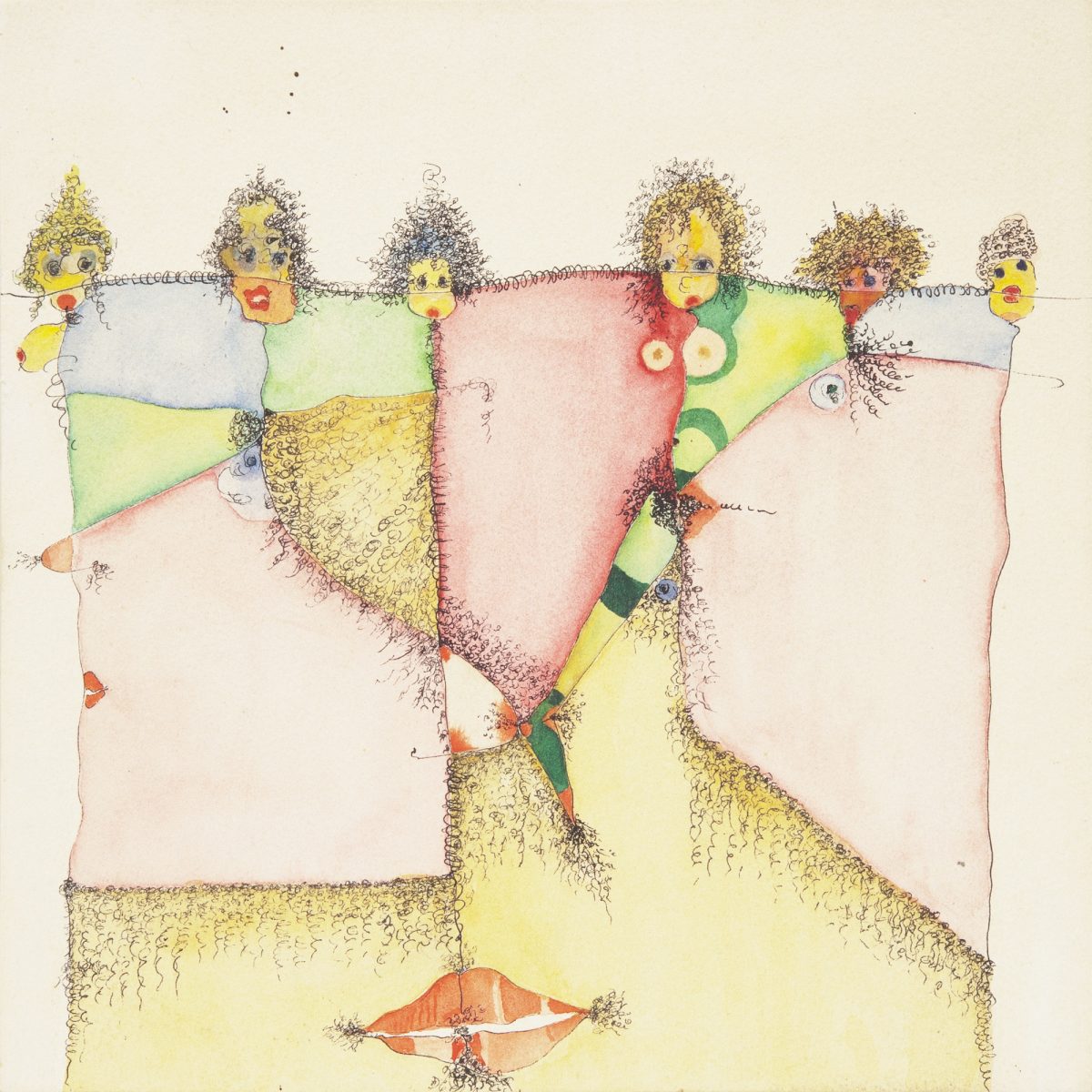
Feminine bodies anchor the buoyant exhibition, Huguette Caland: Tête-à-Tête, now on view at the Drawing Center. Though for the artist, finding such joy in the bodacious and the feminine was hard-won. In Outside the Lines, a short documentary also on display, Caland describes being shamed in her early years because of her weight. And while she hailed from a privileged, well-off background, as the daughter of Lebanon’s first president, she originally found it difficult to establish herself as an artist in a milieu that defined her, first and foremost, as a society figure and a dedicated wife and mother. Nevertheless, Caland defied expectations by living in an open marriage, and then in 1970, at age 39, by leaving her husband and children for Paris.
International recognition came late, when Caland was in her 80s (she died in 2019, at 88), though by the late ‘70s she had already collaborated with the French designer Pierre Cardin on a line of caftans – four are displayed on mannequins in the center’s front exhibition room. With thick contours (breasts, buttocks, pubic hair) stamped onto the fabric, they exemplify Caland’s outré sense of humor and vivacity — a tonal motif that runs through the entire show.

Organized chronologically, Tête-à-Tête covers Caland’s time in Beirut, Paris, and California, where the artist settled in the 1980s before returning to Lebanon. The Paris years show how keenly Caland grasped the connection between abstraction’s geometry and organic forms. Her series Body Bits moves between oil paintings that depict softened ovals in reduced chromas, evoking Abstract Expressionism, and more realist ink drawings. Whereas the paintings contain the voluptuousness, with shapes gently pressuring their lines, in the drawings, the depiction of the female sex is robust and literal. The oscillation — the lithe pencil line, bouncy and tangled like pubic hair, on the one hand, and on the other, the laden, sculptural fold in the oils — produces an energizing friction.
In her Homage to Pubic Hair series (1992), Caland combines wispy lines and bright colors with naif figuration that recalls Paul Klee. The female form is forceful, particularly the labia, with playful pubic twirls. The sensual frankness carries over to the ink portrait series Christine (1992–98), whose empty face and looming wash of a dark pelvis are more somber.

Caland’s late work features intricate patterning, such as in the iridescent mixed media piece, “Appleton I” (2009). Looking at this yellow-pink grid of circles, checkers, and lines, the sense of the Californian landscape is potent — a sizzling summery sweep. The keen evocation of nature made me think of Lee Krasner’s late paintings.
The most recent works in the show, by contrast, pare down the decorative effect of “Appleton I” to diluted grays. And yet, seeing “Rossinante Under Cover V” (2011), named after Don Quixote’s ailing horse — but also to relate Caland’s injured knee and reliance on a cane — it’s impossible to resist its rhythm of jumbled limbs, a kind of mad tangoing. Here too the body unleashes its sometimes grotesque, always poignant animalistic puissance.

Huguette Caland: Tête-à-Tête continues through September 19 at the Drawing Center (35 Wooster Street, Tribeca, Manhattan). The exhibition was curated by Claire Gilman with Isabella Kapur.
0 Commentaires